RETURN TO PART 1 OF THIS SERIES HERE
“THAT’S WHY THEY DON’T BELIEVE YOU, YOU DON’T LOOK SICK!”: FICTIONAL REPRESENTATIONS OF ME/CFS
by Giada Da Ros
Sociologists emphasize the importance of social and cultural representation of social and cultural representation of chronic and emerging disease, both for individual and collective behavior. “(T)he fact that people are able to find out about certain diseases (…) results in a huge improvement of the entire medical system,” argue Marinescu and Mitu (7). This is particularly critical for little-researched, controversial diseases such as ME/CFS. I look at how the small screen dealt with the issue.
News is not the only forum to discuss a malady. Fiction in this sense is a privileged form of television because it creates “furnished worlds” (Eco) and “forms of experiential design” creating empathic resonance among viewers (Pozzato).
In the past century, when ME/CFS was referenced in TV fiction, as elsewhere, it was done in a derisive, derogatory form. On King of the Hill (1997- 2010) a character pretended to have the disease to demand workplace accommodations, then sprawled on the office couch all day. In October 1999, a character on The Simpsons (1989 – present) joked that the disease belonged to the “chick stuff” section of a newspaper (Munson, 110).
The only show that depicted a leading character living with the condition was The Golden Girls (1985–92). The sitcom featured four senior citizens living together in Florida. Susan Harris, the creator of the show and a writer later inducted into the Television Academy Hall of Fame, struggled with ME/CFS symptoms, and in 1989 decided to dedicate the double-episode opening of season five to the disease. She entitled it “Sick and Tired,” and had the character of Dorothy (Bea Arthur) suffer from ME/CFS. In Harris’s case, it was “my revenge script for all the people out there who had a disease like that. In the end, it turned out I did not have chronic fatigue syndrome — it was an adrenal issue — but the fact that the episode inspired so many people to go to the doctor was incredible” (Hunt).
I observe two significant elements.
This is the only show that had a fictional character with the condition before the turn of the century. One would think that, in the subsequent 30 years following The Golden Girls, shows would have portrayed patients, but save for a character in an episode of The Middle (2016, 7:21. “The Lanai”) and a character on a British soap opera, Doctors (2015, series 17, episode 152 of 217, The Power of You), there aren’t any. These two mentioned were depicted in a sensitive way. On the other hand, on the pilot episode of House, MD (Fox 2004 -12), a patient who has been tired for 6 years and believes he has CFS is diagnosed with a psychosomatic illness and cured with some placebo mints.
To my knowledge, no other show since has written any character suffering from ME/CFS, much less a leading character. There is value in simply being the only one. This episode of The Golden Girls is revered by patients, who recognize themselves in it and applaud it to this day. Also, it should be noted that this is not a medical show. Again, one would think that with a genre as popular as the medical drama, sooner or later one would have jumped at the chance to portray ME/CFS. The reasons for this absence are quite clear: networks are afraid to show conditions for which there are no solutions, no cure, no bright side for the viewer to look forward to. There is no possibility with such a disease to show “adductive libido” (Dusi), that is the satisfaction derived from understanding what is wrong and arriving at a solution through differential diagnosis, so popular in many TV shows like House, MD or The Good Doctor, for instance. There is no place for biomedical uncertainty and its mise-en-scène, no matter how widespread or disabling a malady is.
If this double episode of the Golden Girls is so meaningful to the chronic illness community, it is because it is a space of visibility and recognition. It gives a face to all of the grievances, critiques, and expectations of patients while still managing to be quite funny and true to character, as sitcoms should be. In the first half of the plot, Dorothy starts describing her many symptoms, with friends and family showing their support and acknowledging that she has been sick for months. She travels from doctor to doctor to understand what is wrong with her, describing the level of dysfunction (she can’t get rid of what seems like a constant flu; there are days when she can’t talk, get out of bed, wash her hair, work). Yet she’s consistently dismissed: “you’re fine,” “I get tired too, it’s called being old,” described as “mental,” and offered the suggestion that she date men, change her hair color, or see a psychiatrist.
Doctor: Don’t take it the wrong way, but have you ever thought about seeing a psychiatrist?
Dorothy: I’ve seen two, here are their letters. They said there is nothing psychologically wrong with me, they believe it’s physical.
Doctor: What the hell do they know? Psychiatry’s not a science.
Dorothy: Then why did you suggest I see one?
Doctor: Because what you have is not scientific. What else do I have to do, send you to New Mexico to a shaman?
Despite the support of her family members, Dorothy cries and worries: “Maybe I am crazy. Nobody believes me, everybody thinks I’m crazy, maybe I am, maybe I am really crazy.”
Structurally, if the first half (here) of the two-part episode is a pars destruens, the following one (here) is a pars construens. In the second part of the episode, Dorothy sees two more doctors. The first is a pediatrician who has known her for a long time: “Just because the doctors haven’t found something doesn’t mean there isn’t something there.” Finally, a second doctor to whom she is referred gives his diagnosis of Chronic Fatigue Syndrome and explains what she needs to do, how his colleagues often don’t believe what they don’t see under their microscope, and how they wrongly blame the victims.
Later, at a restaurant, the four protagonists celebrate the diagnosis. By chance, Dorothy sees the first doctor she met and confronts him about what he put her through:
I came to you sick, sick and scared and you dismissed me. You didn’t have the answer and instead of saying, ‘I am sorry, I don’t know what’s wrong with you’, you made me feel crazy, like I had it all made up. You dismissed me. You made me feel like a child, a fool, a neurotic who was wasting your precious time. Is that your caring profession? Is that healing? No one deserves that kind of treatment, doctor (…). You’d better start listening to your patients. They need to be heard. They need caring. They need compassion. (5:02)
Never losing its comedic touch, in 40 minutes the sitcom manages to sum up the most important issues for the topic at hand: the model of medicine we strive for; the role of a doctor – the profession has a well-documented evolution on the small screen from caring but infallible (and at times paternalistic) omnipotent supermen, to flawed human beings, even antiheros, mirroring the changing public attitudes (Tapper); the pain of self-doubt and the necessity of validation for the patient (“you don’t know what it means to be believed”); the invisibility of the disease (“Maybe that’s why they don’t believe you, you don’t look sick!” – her mother to Dorothy – 5:02); the importance of having a diagnosis; the role of the name of a disease; gender bias (“I suspect if I’d been a man I would have been taken a little bit more seriously and not told to go to a hairdresser”); and the impact of social support, especially when dealing with that level of disability. The Golden Girls crystallizes here how television was used as a place to challenge the system, describing its faults and offering a virtuous alternative, also having the patient re-appropriate the discourse.
Still, the program can also be criticized because it dropped the ball: it wasn’t able to sustain the storyline for more than those two episodes, and for a chronic condition that is absurd. We lament the show’s inability to demonstrate the consequences of daily activities on the character (going to a doctor or going out to eat at a restaurant are problematic for these patients), therefore failing to expose what is the “momentary visibility and private harm” (Munson, 121) that is their reality. In hindsight, we also observe the way the disease was understood at the time, when post-exertional malaise was still not considered a pathognomonic symptom, and miss out on an accurate portrayal of the social distancing and isolation, the missing out, and other relevant aspects of a chronic condition like this. Television, given the possibility of long forms, diluted in time, would be the best suited medium for this kind of portrayal, as difficult as it may be. It might be perhaps unappealing, but it would also be very powerful.
Fictional representation is the next frontier of patient advocacy. There is a true need for it, for patients to have a mirror in which they can see themselves and for the world at large to bear witness to sufferers’ lives with emotional involvement.
READ PART 3 OF THIS SERIES HERE
Works cited
Doctors. (2000 – present) BBC One. BBC Birmingham.
Dusi, Nicola. 2008. ‘Dr. House: L’ambizione di capire’. In Mondi Seriali. Percorsi Semiotici nella fiction. Edited by Maria Pia Pozzato and Giorgio Grignaffini, 9-21. Cologno Monzese (MI): RTI.
Eco, Umberto. 2016. I limiti dell’interpretazione. Milano: La Nave di Teseo.
House, MD. (2004 – 2012) Fox. Shore Z Productions at al.
Hunt, Stacey Wilson. 2017. ‘The Golden Girls Creators on Finding a New Generation of Fans and Giving George Clooney One of his Earliest Jobs’. In Vulture. Accessed on 31 March 2020. https://www.vulture.com/2017/03/the-golden-girls-creators-on-finding-new-fans.html
King of the Hill. (1997-2010) Fox. 3 Arts Entertainment at al.
Marinescu, Valentina and Bianca Mitu. 2016. ‘Media and Helath: Contemporary Approaches’. In Health and the Media: Essays on the Effects of Mass Communication. Edited by Valentina Marinescu and Bianca Mitu, 7-14. Jefferson (North Carolina, USA): McFarland & Company, Inc., Publishers.
Munson, Peggy. 2000. ‘The Paradox of Lost Fingertips: Metaphor and the Shaming of Chronic Fatigue Syndrome’. In Stricken: Voices from the Hidden Epidemic of Chronic Fatigue Syndrome, edited by Peggy Muson. Binghamton, NY: The Haworth Press.
Tapper, Elliot B. 2010. ‘Doctors on display: the evolution of television’s doctors’. In Baylor University Medical Center Proceedings, 393-399. Dallas: Baylor University Medical Center.
The Golden Girls. (1985 – 1992) NBC. Witt/Thomas/Harris Productions and Touchstone Television.
The Middle. (2009 – 2018) ABC. Blackie and Blondie Productions, and Warner Bros Television.
The Simpsons. (1989 – present) Fox. 20th Century Fox Television et al.






6 thoughts on “ME/CFS On TV (Part 2)”
Thank you!
As I writer, I struggle with making ME/CFS part of the creative narrative. Yet it impacts every single aspect of my life. So why do I keep saying, now that I able to return to a more regular writing practice “well, I don’t want it to ALL be about ME/CFS”. When what I really mean is I don’t want “them” to see my ME/CFS. I don’t want “them” to dismiss me or diminish my worth by seeing my ME/CFS.
It is true I have had a deluge of experiences in my personal, professional, and patient life that make my fears very understandable. But, I am also told time and again that my stories make people laugh; or really cringe; or (better still?) leaves them turning things over in their minds and gut for a while because something in the way it was said captured something they can’t dismiss.
This article is causing me to re-examime my creative writing. Where and why am I shying away from and editing out content because it’s too ME/CFS-related? If this article, TV episodes, blogs and films that mention and explore ME/CFS are so meaningful and life-affiimimng for me, shouldn’t I be choosing to do at least some the same with my own work?
Again, thank you, Giada! Thank you.
Thank YOU, so very much. Sometimes what touches us more deeply is harder to deal with creatively. But when you understand how to tap that source within yourself, it pours. I look forward to your creative work. 🙂
It’s not a TV show, but I wanted to shout out the actual play RPG podcast Friends at the Table for having a small but notable character with CFS on their Partizan season! She has a super cool mech and service bots that support her. I almost cried when I heard her character description. Here’s a link to the fan wiki page: https://partizan.fandom.com/wiki/Agon_Ortlights
How interesting, I didn’t know this.
I believe Golden Girls is the only reason many people have even heard about Chronic Fatigue Syndrome. There is a new show on TBS called Chad. It’s a comedy about a Persian teenage boy trying to fit in in the U.S. One of his friends is a girl with CFS and she’s in a power chair in high school. They are sympathetic to her illness but also treat her like normal person. It’s a brilliant representation and I was so excited to see it on television.
For sure. Thank you for pointing “Chad” out. It sounds quite interesting. I bet you are excited, I am too. We need to see ourselves more on the screen.
Comments are closed.